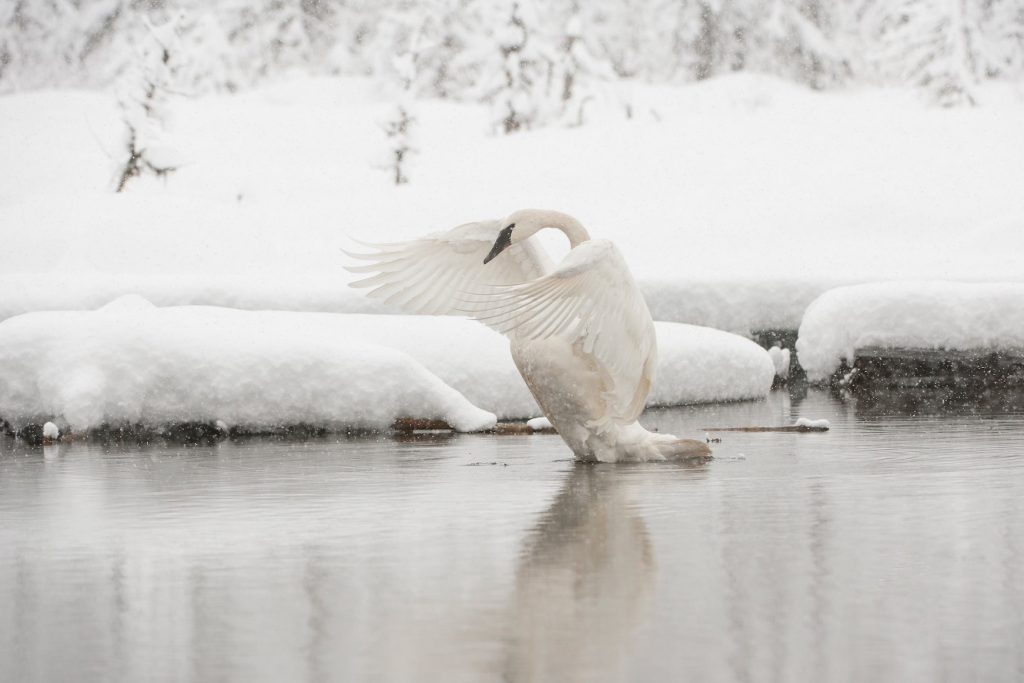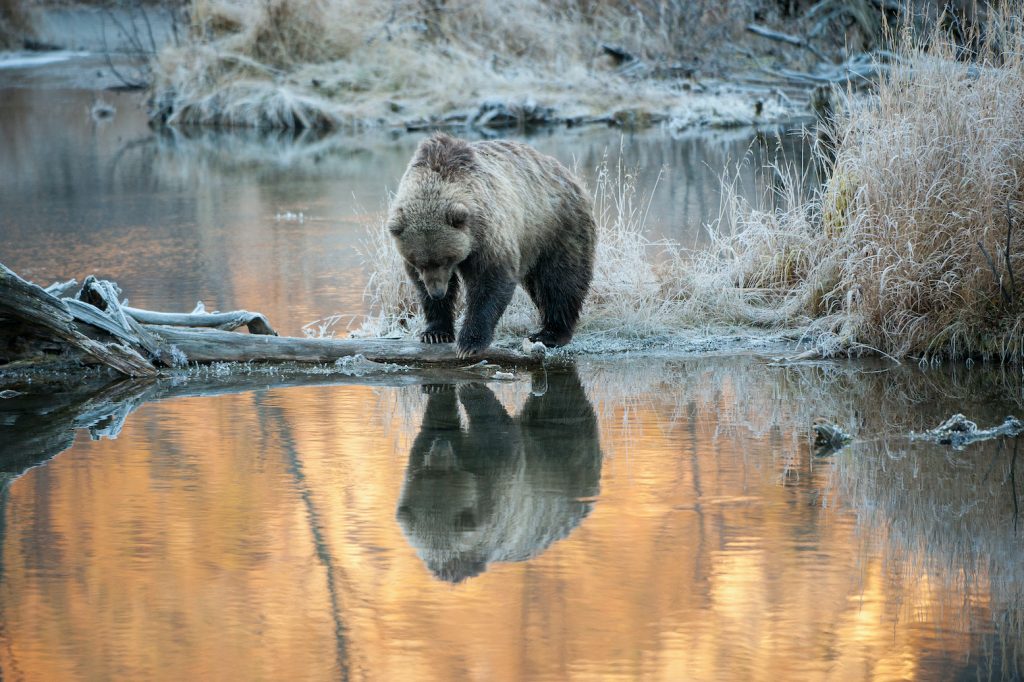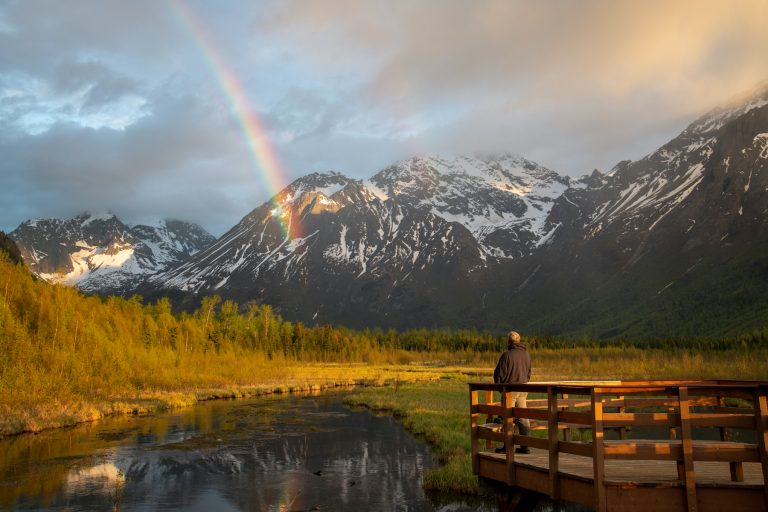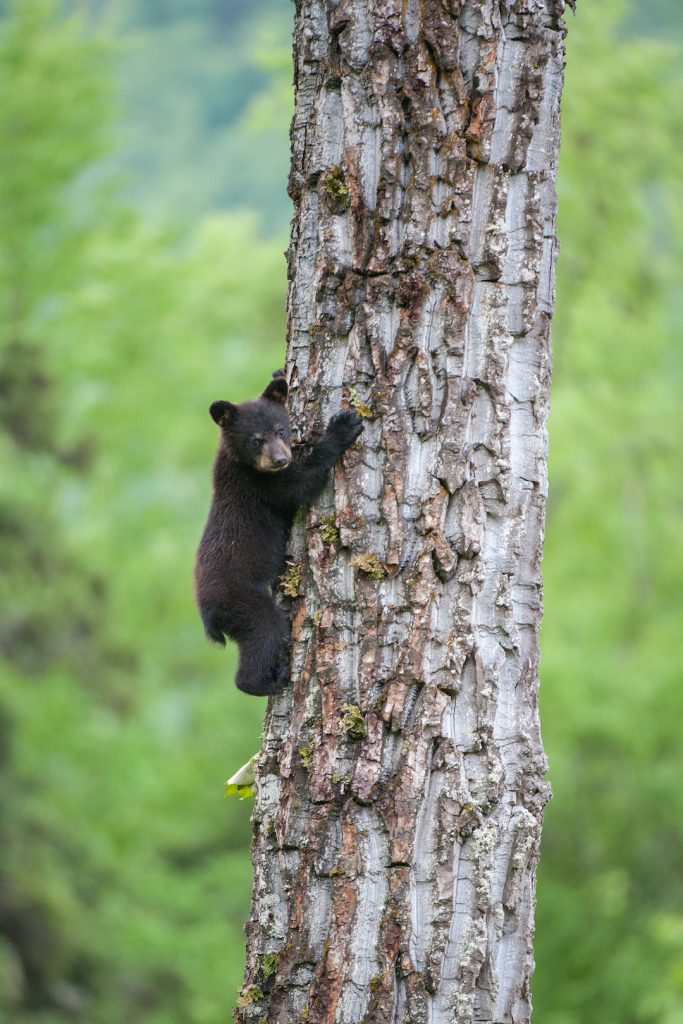This article was originally published in Alaska magazine and is rerun here with permission.
The sun cast dappled shadows through birch leaves as I hiked the trail to Dew Mound behind the Eagle River Nature Center last summer. My year-old pup, Lily, trotted alongside me, investigating the sounds of chickadees and nuthatches and the chatter of red squirrels.
Memories washed over me as we strolled along the winding trail. These were the same birch and aspen trees that oversaw my toddler sons as we began their hiking forays many years ago. Later the peaks of the Chugach Mountains stood sentinel as the boys learned to winter camp, ski, and take care of themselves in the backcountry. And now, those boys are men who bring their own families to this place. For more than three decades, this landscape has helped shape our family, offering us all the sustenance wilderness has to offer.

The gateway to Chugach State Park
This year marks the 25th anniversary of the Eagle River Nature Center, a place as beloved as any I know in southcentral Alaska. While tourists flock to big attractions like Denali National Park and the Kenai Peninsula, locals often choose to come here. The center is north of Anchorage, at the end of a 12-mile scenic road from the town of Eagle River. Beyond that lies the magnificent 495,000-acre Chugach State Park.
As we walked, I remembered the many encounters with wildlife we’ve had here. Skiing on a moonlit night years ago, I saw the silvery shadow of a wolf moving through the trees along the river’s bank. There was no mistaking its lanky form or graceful glide. I thought of the dozens of moose, the pair of nesting swans, the beavers, and bears.
Just then, Lily stopped in front of me, ears up, growling. Ahead stood a black bear cub, as astonished to meet us on the trail as we were. The cub scrambled up a tree, bawling. Elated, I was also alert to the whereabouts of a protective mamma bear. We quietly retreated. I knew of another trail we could hike to get around the bear family.
Friends of Eagle River Nature Center
Asta Spurgis could not have known in 1993 that a summer stint in Alaska would one day lead her to become the director of a place known as the gateway to Chugach State Park. She was a young architect in Chicago and realized that city life wasn’t for her. She decided to try a summer volunteer position in Alaska, and on her third day on the job, a white-haired gentleman wearing long-johns and hiking shorts greeted her at the state park headquarters. His name was Dick Griffith, and he asked if she wanted to come out and help him with some trail work.
Who is this guy? Spurgis wondered. But not knowing another soul in Alaska, she answered, “Sure. What should I bring?”
“A cup and a spoon,” said Griffith. Then they were off, with Griffith cutting trees and Spurgis hauling slash from the trail. Thus began a decades-long friendship with one of Alaska’s most iconic adventurers.

After volunteering that summer at Chugach State Park, Spurgis went to work at what was then called the Eagle River Visitor Center. Budget cuts in the 1990s eventually forced the park to shutter the building most of the year.
Knowing how much the center meant to the community, Spurgis, along with Dick and Carole Lloyd, formed Friends of Eagle River Nature Center. Park administrators awarded the nonprofit a permit in 1996 to run the center and renewed the contract for 25 years in 2005. The name change emphasized the group’s commitment to natural history education.
From bar to learning center
Perched at the edge of a vast wilderness, the Eagle River Nature Center’s log cabin was our favorite place when my sons were young. After a hike, we could always count on a welcoming fire burning in the cabin’s wood stove. The hands-on museum with animal pelts, bear skulls, and owl pellets sparked the boys’ imaginations and generated endless questions.
I learned recently that the building was once a popular bar and grill. Old-timers remember the 1970s when John Barclay built the lodge as a place to get a burger and a beer at the end of the road. Back then, the last section of the route was just a four-wheel-drive trail. At the bottom of the hill behind the lodge lay a racetrack for snow machines in winter and motorbikes in the summer.
Jim Tinius, who still lives nearby, remembered knocks on the door in the middle of the night from patrons who wound up in the ditch. “It got to where I told them, ‘There’s the phone. Call a wrecker.’”
Dale Bingham was the Chugach State Park ranger in charge of converting the dark, dilapidated lodge into a visitor center in 1980. He says it would have been easier to tear it down. “It had plywood over dirt floors, red velvet wallpaper, and a fireplace made of glass bottles, some of which had melted.”
A dedicated team of craftsmen and women worked tirelessly for a year to transform the space for park visitors. Trails and boardwalks over salmon streams and interpretive displays helped people learn about the ecology of the area.
“We all had a passion for trying to design a comfortable place that would be an educational learning center,” Bingham remembered.
Volunteers

Spurgis, her small staff, and many volunteers carried forward that passion. Some of the people who originally helped establish the nature center are still volunteering today, including Dick Griffith, who is 94.
“I cannot say enough about the volunteers,” Spurgis said. “They are just tremendous in their commitment to this place.”
Stewardship of a state park
Today, the Eagle River Nature Center offers backcountry yurt and cabin rentals, year-round programs, and miles of trails. Wild bird releases from the Alaska Bird Treatment & Learning Center take place here. The nature center also hosts the Icy River Rampage winter fat-bike race and is the endpoint of the famous Crow Pass Crossing backcountry footrace.
Every year, 4,000 to 5,000 Alaska kids visit the Eagle River Nature Center on school field trips. Here, children have an opportunity to experience the outdoors and learn the value of wilderness. The hope is that education will translate into good stewardship of the park and expand outward to caring about all wilderness areas of the world.

The day of my hike with Lily, we arrived at Echo Bend without seeing another person, just the bear cub. Birch and aspen gave way to spruce and hemlock before the trail opened to the vaulted peaks surrounding Eagle River valley. Lily took one timid step into the glacial water and retreated from the cold. I breathed in the mountain air. The nature center and the trails beyond are both as familiar and dear to me as an old friend. To my mind, wilderness is best experienced on foot or by ski, at the rhythm and pace of a beating heart. I hear things, see things, notice things that in the rush of daily living elude me.
The Eagle River Nature Center’s celebration of 25 years is just the beginning of a legacy that I’m convinced will last long into the future, far beyond my own moments on the timeless shores of this river.
For more information about the Eagle River Nature Center, visit ernc.org.





Comments are closed.